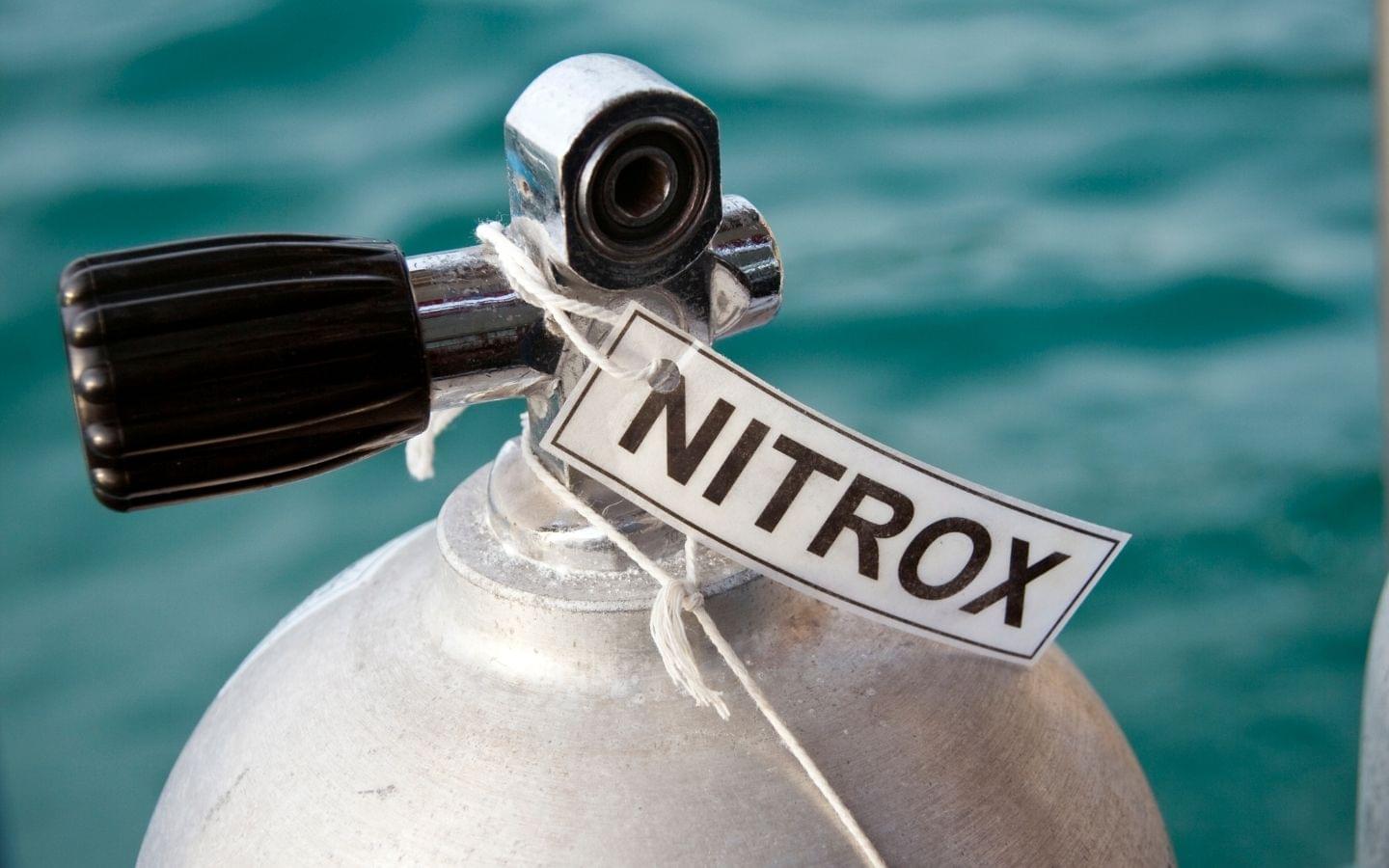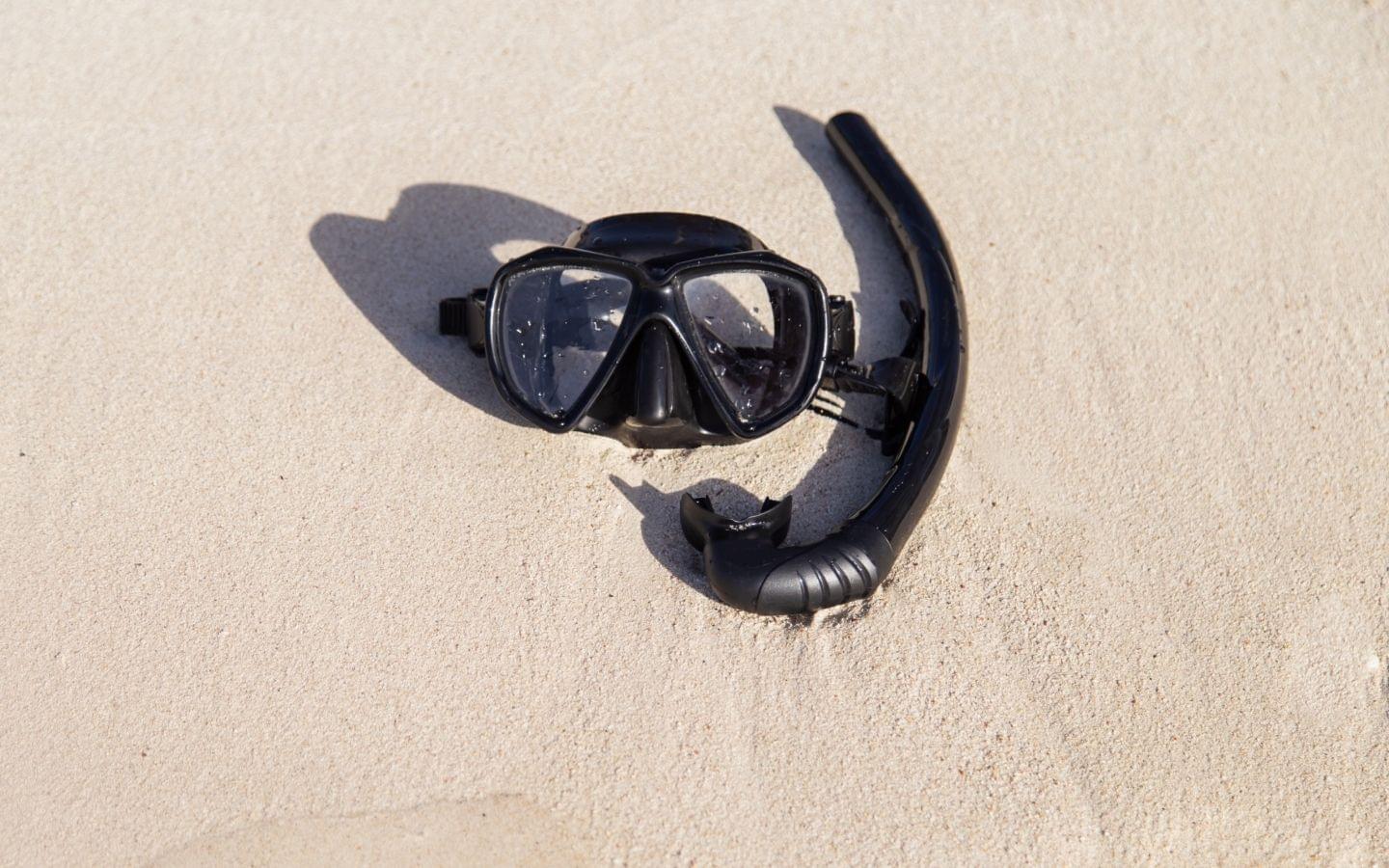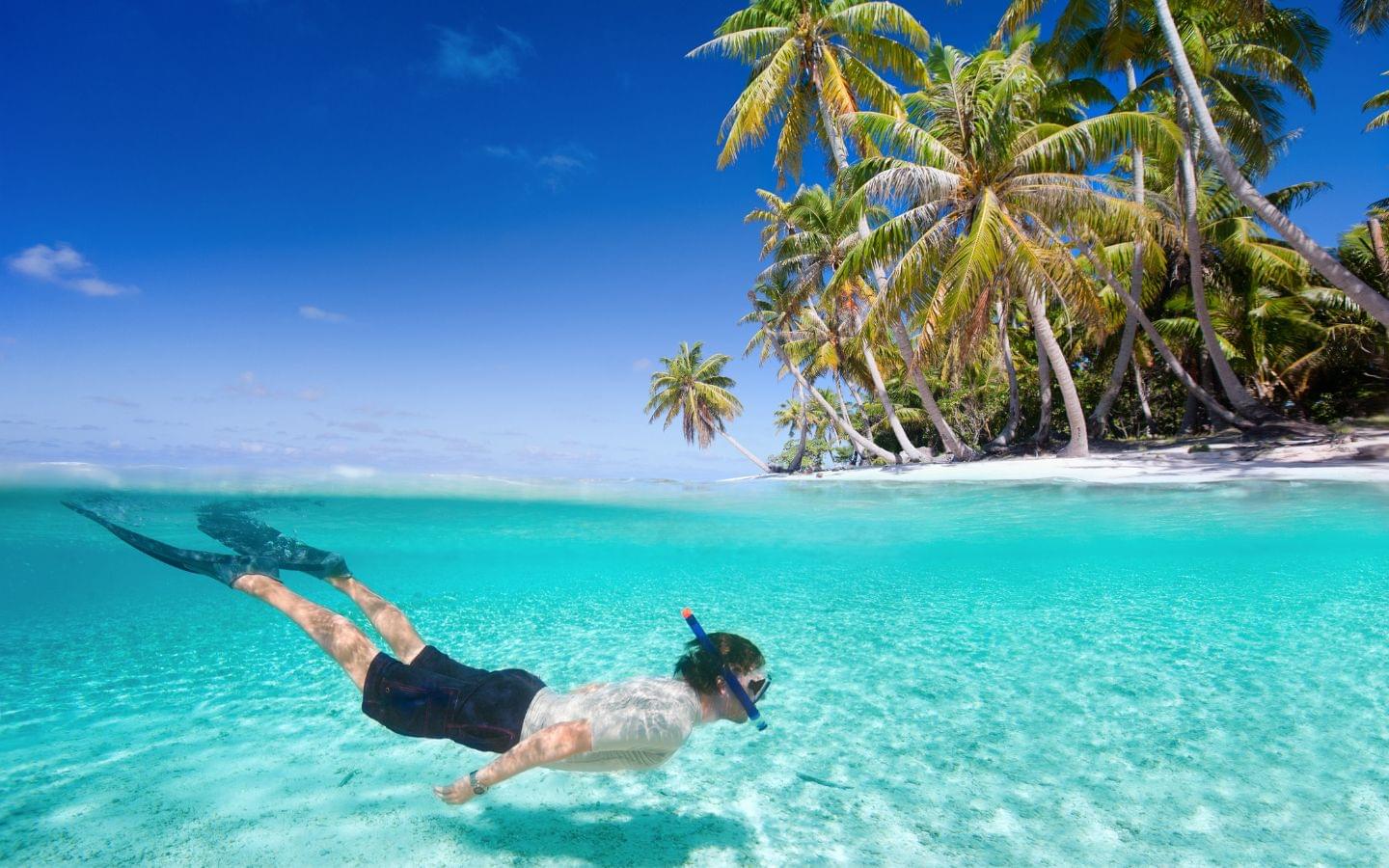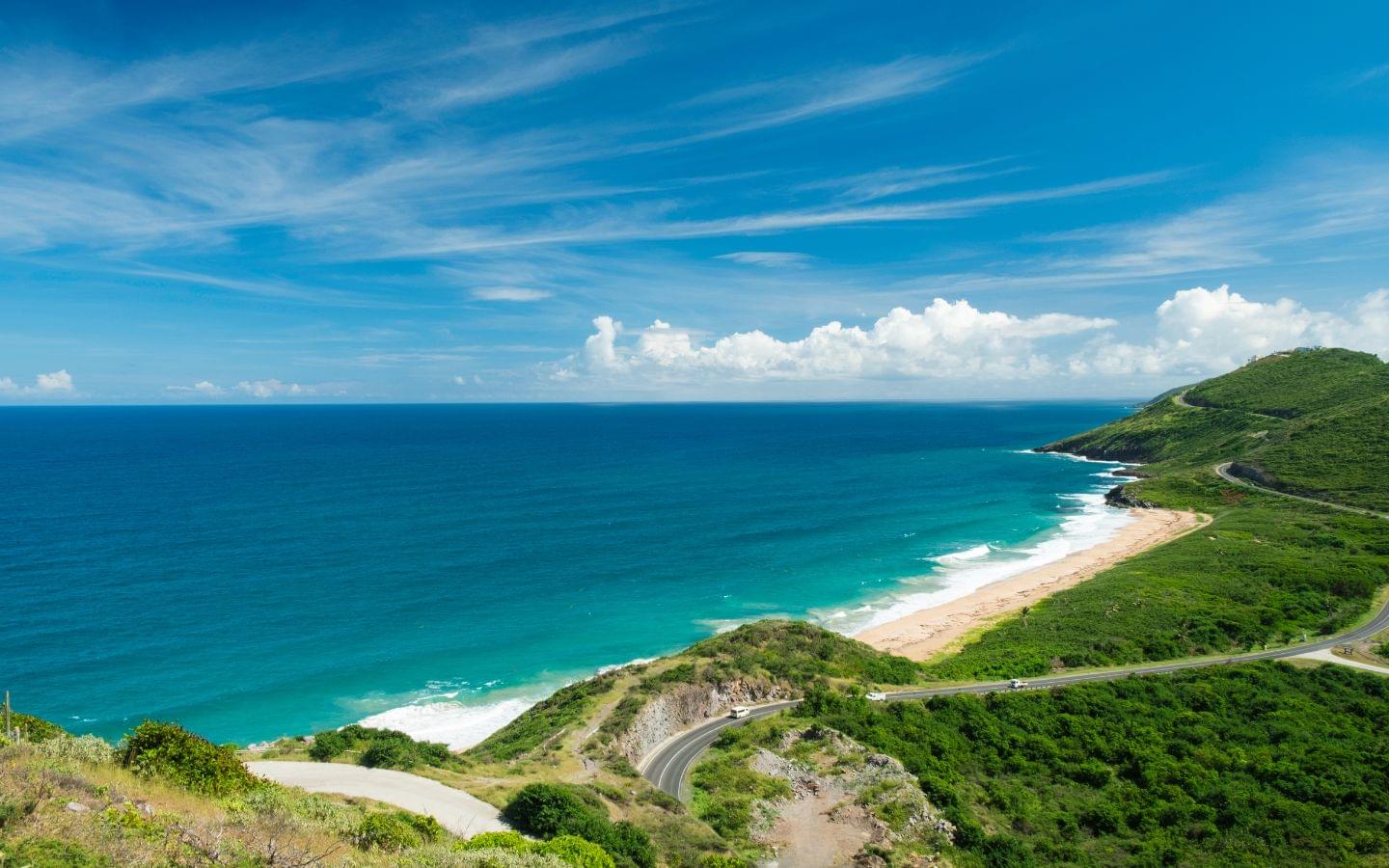The benefits of nitrox scuba diving: Will it help or hurt your dives?
Scuba diving with nitrox gives divers longer bottom times and helps some feel less tired, but it comes with extra precautions you need to protect yourself underwater.
Nitrox is the term used by divers when referring to enriched air nitrox (EAN). It is an alternative gas mixture that scuba divers get certified to use. Made of different oxygen and nitrogen ratios, nitrox has its own advantages and safety procedures.
Many professional and frequent scuba divers choose to use nitrox. The higher oxygen percentages give divers longer dive times and shorter surface intervals. While the lower nitrogen amounts reduce the chances of developing decompression sickness (DCS). Many divers also find that they are less tired after repetitive days of diving.
With these advantages, there are also some negatives, including slightly shallower dives. These air mixtures require divers to take extra precautions when calculating their dive plans. When done correctly, divers can fully enjoy longer dives with fewer side effects.
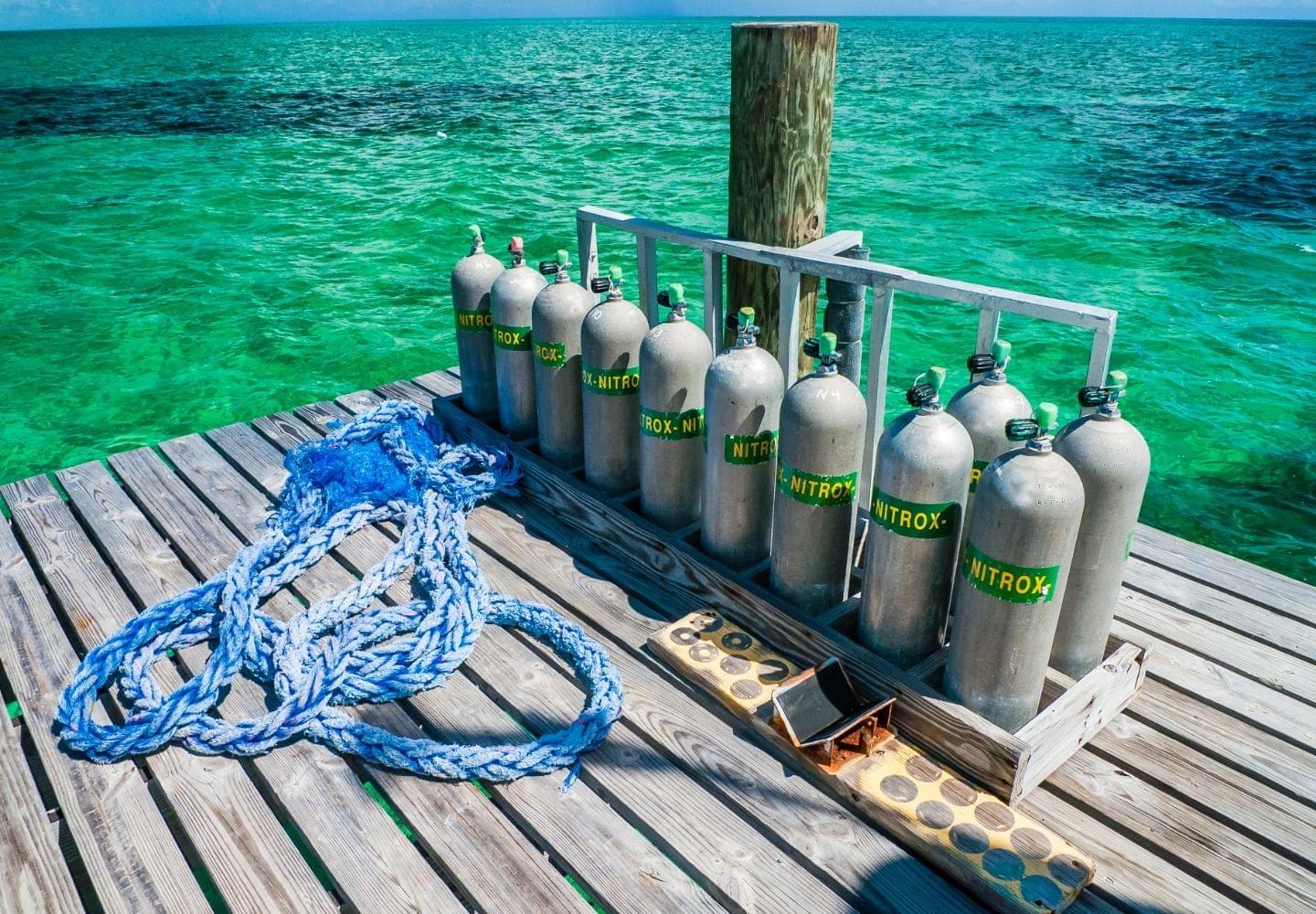
What is nitrox?
Normal recreational scuba tanks have an air mixture of 21% oxygen, 78% nitrogen, and 1% of additional gases. This mimics the normal air we breathe on the surface. Nitrox refers to a few mixtures of gas that all have higher levels of oxygen at different percentages. These oxygen-rich air tanks change the decompression limits that divers need to follow 1.
There are two main types of EANx that recreational divers can choose from. Nitrox I is the most common and has 32% oxygen and 68% nitrogen. This was originally used for industrial diving to give workers a longer bottom time. As an example, a diver at 30 meters would be able to dive for 15 minutes longer than they would on regular compressed air 1.
Nitrox II is the second most common and is a mix of 36% oxygen and 64% nitrogen. While these are the most common types for recreational diving, there are other mixtures available from 28 - 40% oxygen. Each ratio will have different depth and time limits. As you increase the oxygen your bottom times increase, while your depth limit decreases 2.
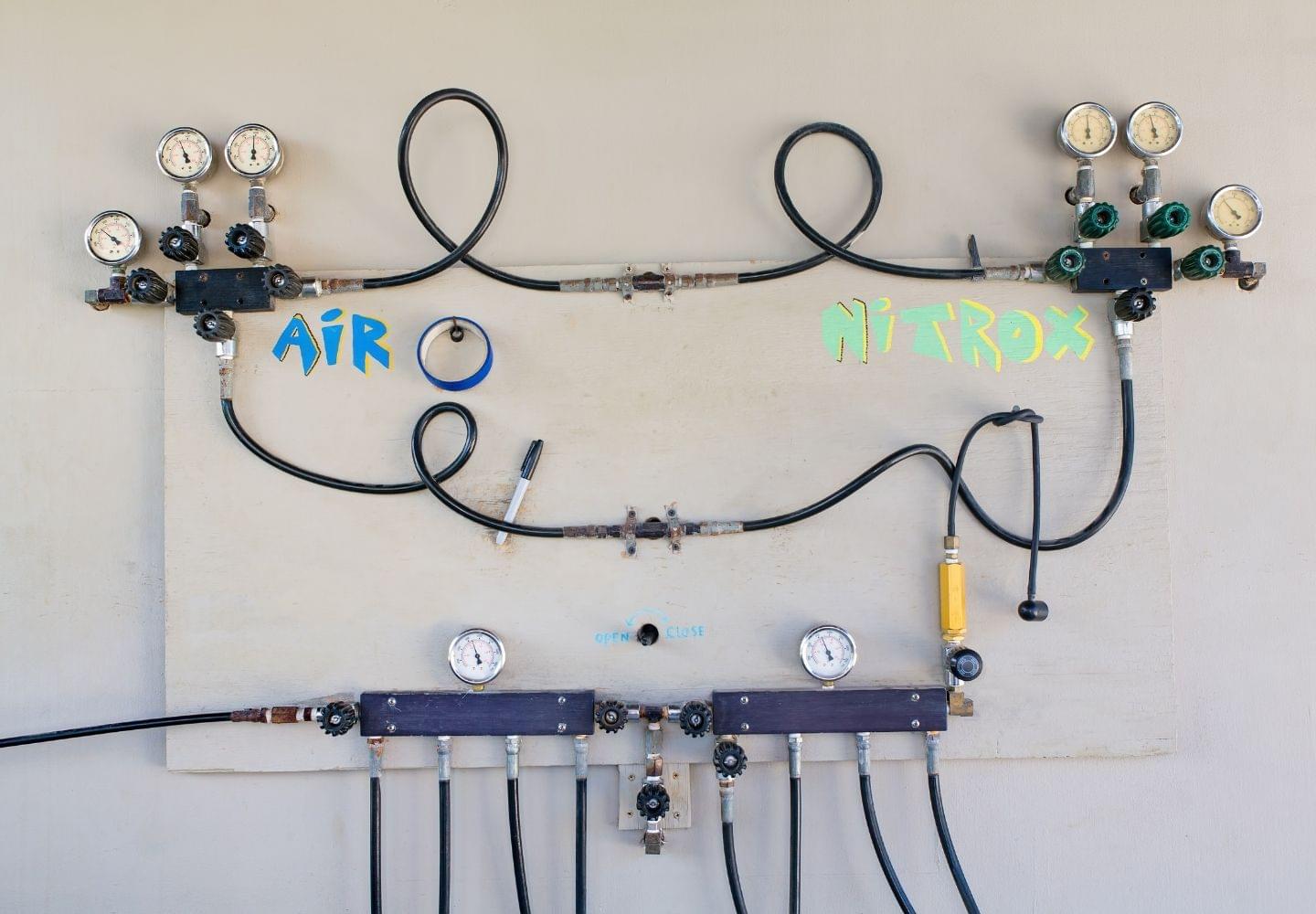
Advantages of diving with nitrox
Longer bottom times
One of the main reasons divers will get EAN certified is to have longer bottom times. When using a normal tank of air, you’re limited on time based on depth and nitrogen absorption. Excess nitrogen is what causes DCS. When your body absorbs the nitrogen from a regular gas mix, it builds up in body tissues and forms bubbles. This is a serious health concern for divers.
However, when breathing a nitrox mixture, there is less nitrogen in the tank for your body to absorb. Studies have also shown that nitrox divers had fewer nitrogen bubbles in their bodies after diving 3. This allows you to stay at depth for a longer period of time with less concern about developing DCS. Though you still need to take precautions to avoid it completely. The exact amount of bottom time depends on the mixture of gas you use and the depth of your dive.
Shorter Surface Intervals
Similarly, surface interval time changes with the amount of nitrogen in your body. These breaks at the surface give you time to release excess nitrogen built up from your dive. Your body releases nitrogen faster at the surface as you breathe. The length of your surface interval will depend on the length and depth of your previous and upcoming dives.
With less nitrogen absorbed from an EAN mixture, you will also need less time to off-gas the nitrogen. You can continue diving sooner and not have to worry as much about nitrogen bubbles forming in your body.
Feel better after diving
This is a common motivator for divers to get their nitrox certification. Many who dive with EAN note feeling more alert and less fatigued following repetitive dives. However, this is not supported by any studies that have tried to test this theory 4.
While there isn’t any proof that nitrox will make you feel better after a dive, many divers claim to feel a difference. For those who do, using nitrox is well worth it.
These advantages benefit any diver, but those who dive often will notice them more. This is why many divemasters and instructors use nitrox to lessen the effects of diving every day for work.
You can learn more about all the steps needed to become a dive professional in our guide here.
Those who dive on a liveaboard will similarly enjoy the advantages of using nitrox. Liveaboards can be intensive days of scuba diving, and often at the end of the trip divers feel drained. With nitrox, you will be able to enjoy the spectacular location of your trip with longer dives and be ready to get back in the water sooner. For some, they will notice by their last dive they still have plenty of energy left.
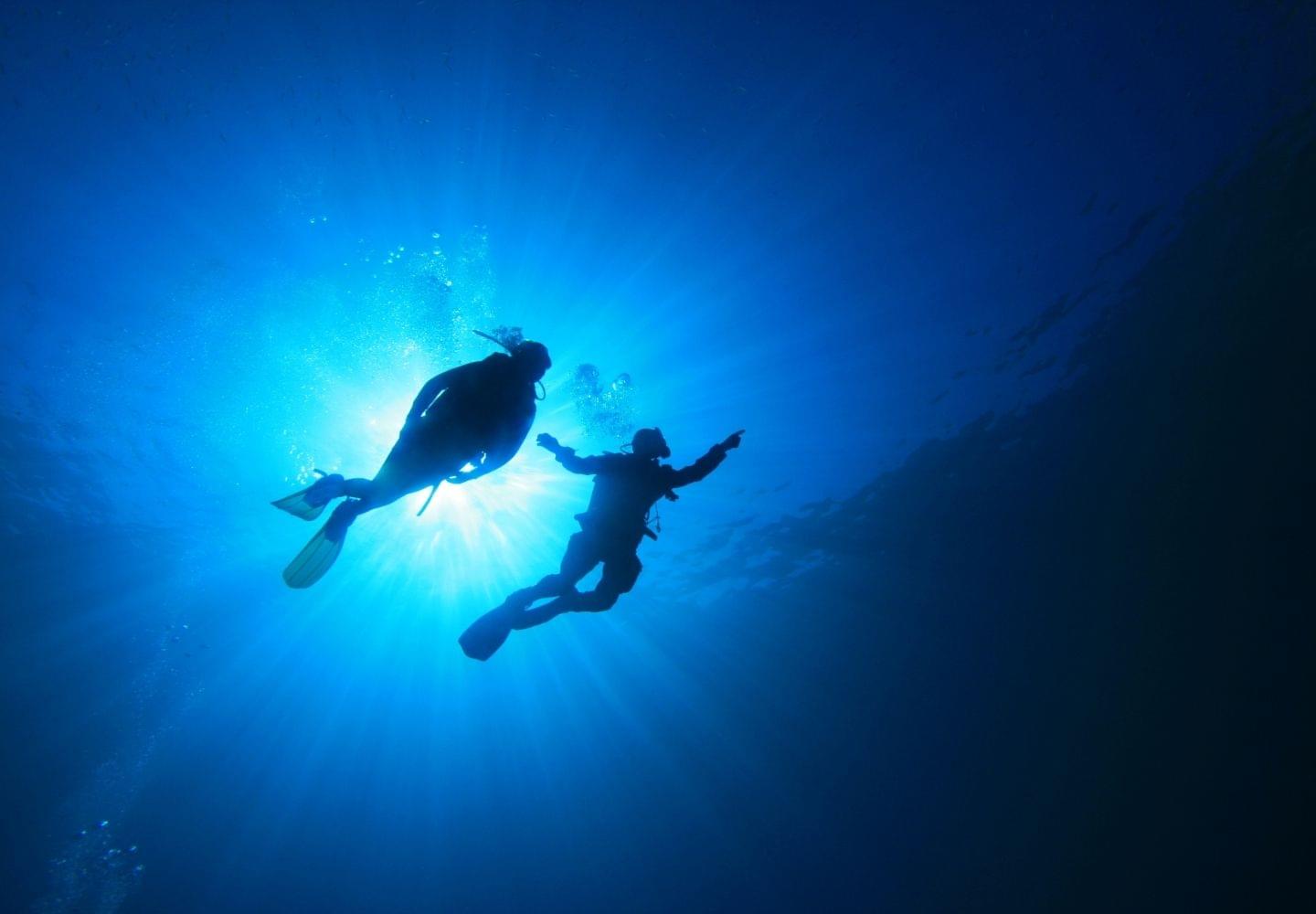
Disadvantages of diving with nitrox
Shallower dive depths
Many believe that EANx diving lets you go to deeper depths like a technical diver. Unfortunately, this is incorrect. Tec divers use trimix gas, not nitrox. The higher levels of oxygen in an EAN tank will actually lead to shallower dives within the no-decompression limits.
When scuba diving with an EANx mixture, your depth limit changes due to the partial pressure of oxygen (PPO2). This is the amount of pressure oxygen is under in the tank. From this number, you calculate the atmospheres absolute, or ATA. The National Oceanic and Atmospheric Administration, recommend a maximum operating depth of 1.4 ATA for no-decompression nitrox dives, and 1.6 ATA for deco dives. The percentage of oxygen in your tank will determine the depth that you reach 1.4 ATA and can no longer descend 2.
If you dive with the standard EANx32, you will have an ATA of .32 at the surface where there is one atmospheric pressure. As you descend and increase the pressure, the PPO2 will increase the ATA amount. Typically, you can dive to 33 meters with this mixture. Tanks with higher percentages of oxygen will have shallower limits 2.
Limited depths will not impact every dive you do, as many dive sites have plenty to see within your limit. Coral reefs and their inhabitants are usually found in shallower waters. When you want to do deeper dives, you can always choose not to use nitrox for that trip.
Risk of oxygen toxicity
Following the depth and time guides for a nitrox dive is crucial. Exceeding your limits increases your risk of oxygen toxicity. The increased oxygen exposure from EANx becomes harmful to the nervous system when the guidelines are not followed. This leads to seizures, blackouts, vertigo, nausea, and other symptoms. All of these create serious complications while underwater that can cause drowning or arterial gas embolisms 5.
Though this is a serious condition, it is avoidable when you plan dives correctly and you know your limits. There are dive tables made specifically for nitrox diving to help you plan. You will learn to use these in the nitrox course.
Additionally, many dive computers can keep track of both compressed air and nitrox limits. If your computer has a nitrox mode you can program it for your EAN gas percentages. With this, it will calculate your dive depth, time, and surface intervals.
To find a computer that can calculate compressed air and nitrox, see our guide to choosing the best dive computers here.
Risk of gas narcosis
A common misconception about nitrox diving is that you will not get “narc’d”. This is the term divers use for nitrogen narcosis. It is a feeling of intoxication when diving to deeper depths, but it can happen on shallower dives too and is unpredictable. Though not immediately dangerous, this feeling impairs judgment and slows reaction time.
While divers often link this feeling to nitrogen, any compressed gas can cause narcosis at depth. Divers may be able to avoid getting narc’d with EAN mixture because they don’t dive as deep. However, it is still possible 6.
Accessibility and cost
Creating safe and measured nitrox tanks takes extra time and effort from dive shops. They must accurately measure the nitrogen and oxygen ratios, and be cautious of any contaminated air. There are three ways that dive shops can do this, but each is costly. They need a separate compressor to make their mixtures and some will need to ship in pure oxygen.
Because of this, when traveling in some locations it will be more difficult to find a shop that offers EANx mixtures. Those that do offer it, charge extra fees to cover their costs and management of the systems 7.
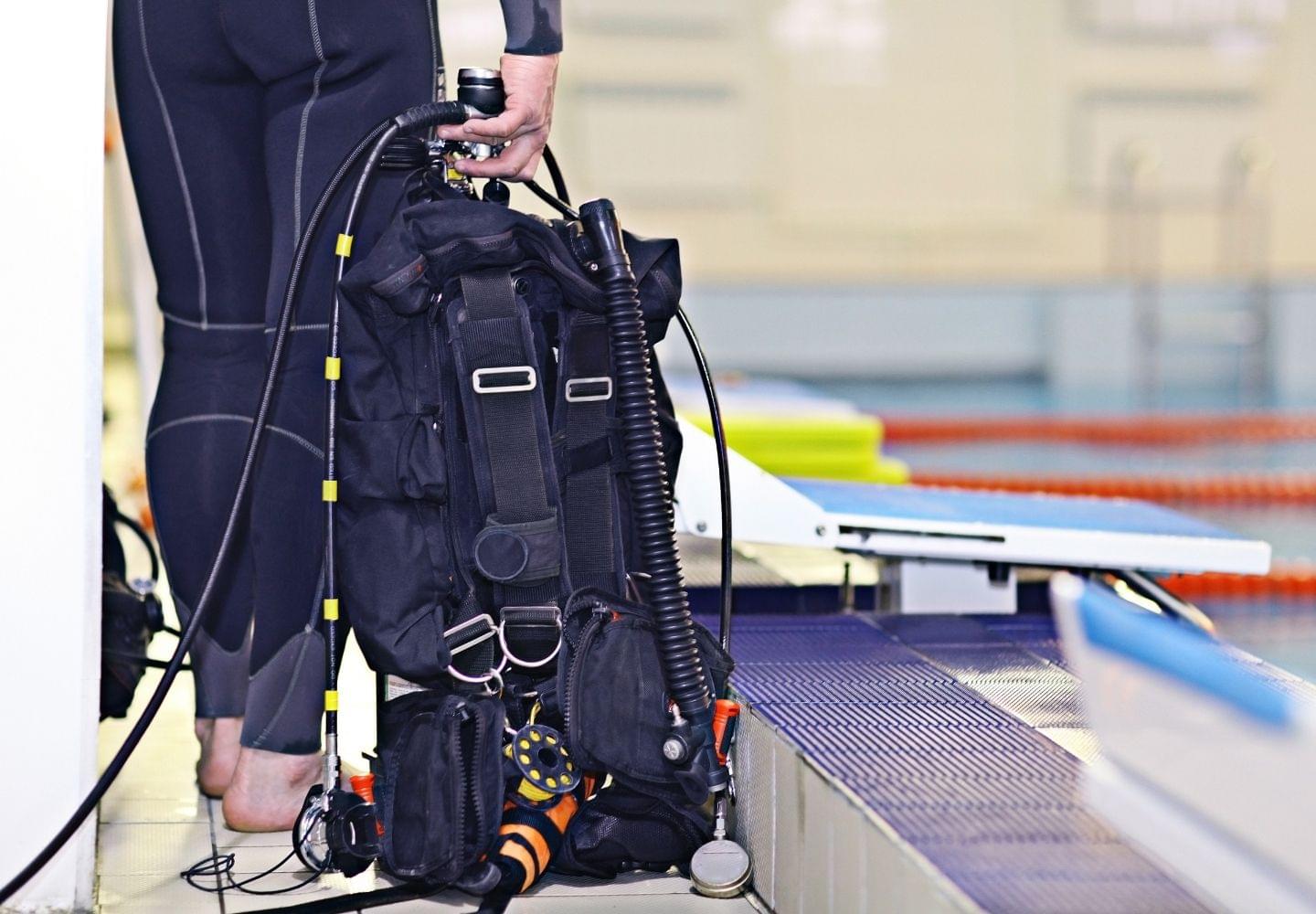
How to get nitrox certified
Learning how to dive with nitrox and calculate the limits and other safety procedures is all covered in a nitrox course. The Enriched Air Diver course is one of PADI’s most popular and many who become dive instructors will take it 8.
The course covers all of the information on how nitrox affects your body and how to analyze the oxygen contents of a tank. You will learn to calculate the PPO2 and ATA to determine dive depths, bottom time, and surface interval length.
Before taking the course, you must be a certified Open Water diver. You do not need to have a set number of dives beforehand. Once you have your nitrox certification, you can dive with any nitrox mixture you choose around the world.
Nitrox gear
Most gear is compatible with regular and nitrox air mixes. However, if you are using your own gear, you will want to make sure your regulator will work with both. The biggest concern would be using a titanium regulator. These oxidize at lower levels and won’t work well with an oxygen-rich gas. For those with their own tanks, you will need to clearly mark it for nitrox to make it stand out from the divers’ tanks 6.
If you are renting gear with a dive center, they will provide everything for you. You will notice your tank is clearly marked for nitrox before the dive. Even when diving with a shop’s gear, you should always check your air yourself in your pre-dive check.
Conclusion
Nitrox is a more concentrated mixture of oxygen than regular compressed air. It varies in oxygen percentage and each type has its own dive depth and time limits. While you will have longer dives on EAN, you will have to stay at shallower depths. Calculating your dive limits beforehand is a necessary step before any dive and protects you from oxygen toxicity.
For frequent divers and those interested in long dive trips, such as on a liveaboard, EAN can help you enjoy your dives more. However, dive shops with nitrox are sometimes harder to find and charge extra for the service.
Resources
-
Loske, A , ‘Fundamentals of Scuba-Diving Physics’, 3 (2): International Journal of Sports Science2013; 37 - 45 ↩ ↩2
-
(May, 2019). NOAA No-Decompression Tables for Nitrox Dives. Office of Marine & Aviation Operations. Retrieved May , 2021 from https://www.omao.noaa.gov/find/media/documents/noaa-no-decompression-tables-nitrox-dives ↩ ↩2 ↩3
-
Brebeck, A, et al. ‘Beneficial effect of enriched air nitrox on bubble formation during scuba diving. An open-water study’, 36 (6): Journal of Sports Science2017 ; 605 - 612 ↩
-
Chapman, S. Plato, P. ‘Measurement of Fatigue following 18 msw Open Water Dives Breathing Air or EAN36’: Diving for Science2008 ; 1 - 11 ↩
-
Newton, H , ‘Neurologic Complications of Scuba Diving’ , 63(11): American Family Physician2001 ; 211 - 218 ↩
-
General Nitrox Information. Nitrox.com. Retrieved May, 2021 from http://www.nitrox.com/general-nitrox-info.html ↩ ↩2
-
Richardson, V , ‘Why Nitrox Costs So Much’ ,24, Undercurrent October , 2009 ↩
-
Enriched Air Diver. PADI. https://www.padi.com/courses/enriched-air-diver ↩
Last updated 02 July 2021
